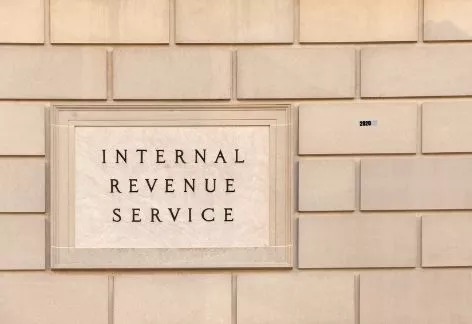If you have received a Notice of Intent to Levy (CP504), here are the steps you should take to put an end to your tax debt.
The US government is the country’s most powerful creditor in terms of how far-reaching its ability to lien and levy tardy taxpayers can be. Once the government catches wind of your tax debt, they will initiate the collection process and begin pressuring you to cover your outstanding balance.
Attempts to ignore the government’s notices and letters can result in a Notice CP504, or a Notice of Intent to Levy. This is one of the last notices the IRS will send your way before they begin seizing your assets and accounts to pay for your tax debt.
The IRS usually does not resort to levies until a significant amount of time has passed without any attempt on your behalf to pay the debt or get in touch with the IRS to set up a payment plan. Thankfully, you can still salvage the situation if you act now.
What is a Notice of Intent to Levy (Notice CP504)?
At its simplest, the Notice of Intent to Levy is a severe warning shot fired by the IRS if they have reached the point in the collection process wherein their best shot at getting the money owed to them is via one or more levies. A levy is a physical claim of an asset, the contents of an account, or the portion of a debtor’s wage by a creditor.
However, a Notice of Intent to Levy does not immediately translate into a levy. The IRS is obligated to go through several steps before it can start claiming what it’s owed, and receiving the notice kickstarts a 30-day grace period before the levy begins.
Within those 30 days, the IRS will also:
-
-
- Explain your right to appeal the levy within the next 30 days.
- Include an explanation for the levy and how the seizure will begin, as well as your immediate options.
- Ensure that you receive the Notice CP504.
-
There are times when the IRS will skip the 30-day period, although these are rare. They include cases where the IRS believes that waiting will jeopardize the government’s chances of collecting (such as when a tax debt is close to expiring).
Here’s What the IRS Can Levy
If you fail to respond to Notice CP504, set up a payment plan, or outright pay off your tax debt, the IRS will be eligible to begin seizing certain assets. Here is what the IRS can claim during a tax levy:
-
-
- Social Security benefits
- A portion of your wages (based on number of dependents and income)
- Personal property
- Vehicles
- Real estate property
- Rights to property
- Commissions
- Retirement benefits
- Payments due to you
- Government benefits provided by the OPM
- Bank accounts
-
If you want to figure out what is exempt from being claimed as a levy on income or wages, consult IRS Publication 1494.
If the IRS claims your income or wages, it will take a portion of your filing status, income, and number of dependents until the debt is paid.
Additionally, if the IRS levies property or assets, it will claim a property, liquidate (sell) it based on its quick sale value (QSV), and use the proceeds to cover your debt. If the proceeds from the sale were not enough to cover the debt, as well as penalties and interest, the IRS will levy something else. If it was more than enough, the IRS will send you the remainder.
Here’s What You Should Do Next After a CP504
There is only one guaranteed way to deal with a Notice of Intent to Levy – by paying the taxman in full. The IRS does not stop any collection actions unless:
-
-
- The taxpayer is in a payment agreement with the IRS and has not missed any payments.
- The taxpayer is in financial trouble and is currently uncollectable.
- The taxpayer has successfully appealed the IRS’s decision.
-
To that end, your best bet is to confront the debt. There are, thankfully, multiple different ways to deal with a tax debt to the IRS, aside from outright paying it all off at once. Your next step should be to talk with a tax professional and figure out what options your circumstances allow.
Dealing With the IRS
You have multiple options when dealing with a tax debt to the IRS. The first and most obvious is to start paying off your debt. The IRS offers two different types of payment plans (short-term and long-term) for taxpayers looking to halt collection efforts. In most cases, the IRS will reduce the interest rate and halt certain collection efforts once you’ve made at least three consecutive payments in your plan.
If this was your first time getting into trouble with the IRS, or if certain circumstances such as a disability hindered you from understanding the extent of your debt, you can have certain penalties stricken from your total debt as part of a penalty abatement.
Offer in Compromise
An offer in compromise is often considered the holy grail of tax debt resolution, but it is not something you can trick the IRS into offering.
Should you be entirely out of other options financially, you can work with the IRS to figure out a reduced payment plan that would allow them to recover at least part of what you owe them within the rest of the debt’s collectible lifetime (i.e., before the statute of limitations).
You can use a pre-qualifier tool to see if you are eligible for an offer in compromise, to begin with, but note that such a tool is no guarantee that the IRS will accept your offer. Again, a tax professional can be of further assistance and help you determine if an OIC is a real option for you.
Currently Not Collectible
IRS collection actions are halted if they are causing financial hardship. In these cases, the IRS can mark your account as currently not collectible (CNC) and will not levy your assets or properties but will continue to hold a lien over what you own. As a result, your tax debt will continue to accumulate interest and relevant penalties.
Your CNC status will be reviewed periodically to determine if your financial situation has improved.
Innocent Spouse Relief
Suppose your spouse is in charge of filing jointly for you and has failed to file on time or pay your taxes. In that case, you might be able to reduce or eliminate your tax debt by appealing for innocent spouse relief.
Not all tax debt qualifies for innocent spouse relief. The IRS can figure the amount you are responsible for after you fill out and send Form 8857.
Whatever You Do, Get a Pro
The IRS has a responsibility to respect the taxpayer’s rights in any given interaction and ensure fair treatment. But the IRS is in the business of collecting taxes for the government, and they are incentivized to protect the government’s interests above all else.
To that end, they will inform you of what they must – but are not required to advocate for you.
If you received a Notice of Intent to Levy (CP504), do not go into a confrontation with the IRS without a professional advocate at your side. Even if all you want is a quick bank levy release and amicable end to your tax debt problems, a tax professional can help you navigate the situation and find the swiftest way to put it behind you.
CONTACT OUR TAX PROFESSIONALS TODAY!

